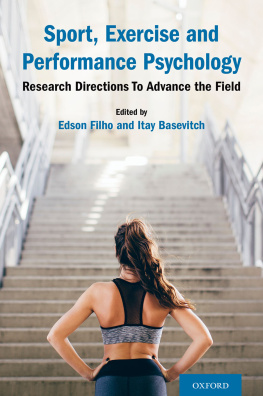Thank you for downloading this Simon & Schuster ebook.
Get a FREE ebook when you join our mailing list. Plus, get updates on new releases, deals, recommended reads, and more from Simon & Schuster. Click below to sign up and see terms and conditions.
CLICK HERE TO SIGN UP
Already a subscriber? Provide your email again so we can register this ebook and send you more of what you like to read. You will continue to receive exclusive offers in your inbox.
We hope you enjoyed reading this Simon & Schuster ebook.
Get a FREE ebook when you join our mailing list. Plus, get updates on new releases, deals, recommended reads, and more from Simon & Schuster. Click below to sign up and see terms and conditions.
CLICK HERE TO SIGN UP
Already a subscriber? Provide your email again so we can register this ebook and send you more of what you like to read. You will continue to receive exclusive offers in your inbox.

Gallery Books / Jeter Publishing
An Imprint of Simon & Schuster, Inc.
1230 Avenue of the Americas
New York, NY 10020
www.SimonandSchuster.com
Copyright 2018 by Leonard Zaichkowsky and Daniel Peterson
All rights reserved, including the right to reproduce this book or portions thereof in any form whatsoever. For information, address Gallery Books Subsidiary Rights Department, 1230 Avenue of the Americas, New York, NY 10020.
First Gallery Books hardcover edition June 2018
GALLERY BOOKS and colophon are registered trademarks of Simon & Schuster, Inc.
For information about special discounts for bulk purchases, please contact Simon & Schuster Special Sales at 1-866-506-1949 or .
The Simon & Schuster Speakers Bureau can bring authors to your live event. For more information or to book an event, contact the Simon & Schuster Speakers Bureau at 1-866-248-3049 or visit our website at www.simonspeakers.com.
Design by Renato Stanisic
Jacket design by Richard Yoo
Jacket photographs by Shubhangi Ganeshrao Kene/Getty Images (male brain); Cscredon/Getty Images (basketball); Thomas Northcut/Getty Images (soccer ball); Alexander Nicholson/Getty Images (football); Rich Johnson of Spectacle Photo/Getty Images (baseball)
Library of Congress Cataloging-in-Publication Data is available.
ISBN 978-1-5011-8186-3
ISBN 978-1-5011-8188-7 (ebook)
For Linda, a lifetime of unconditional support, sons Justin and Bryan and their families, Tamara, Tracy, May, Talia, Greyson, and Benjaminyou are the best!
LZ
For Kyle, Matt, and Steve, who give me pride, and for Shirley, who gives me joy.
DP
FOREWORD
Mike Sullivan, Head Coach, Pittsburgh Penguins
B ack when I was a college student and hockey player at Boston University (BU), my father was coaching my younger brother in a youth league in the Boston area. In the summertime Dad asked me to go on the ice and run practices with some skill sessions for the kids. I was trying to find certain drills and activities that would be best for their overall development. The first thing that dawned on me was that if I was going to be an effective teacherin essence, what a coach isId better have an understanding, at least on an elementary level, of how people learn. Otherwise, how could I effectively put together strategies and methodologies that would maximize the opportunity to teach these kids?
So thats really where it all started for me. Thats why I began learning about the cognitive side of sports. I was trying to better understand how people learn at their respective age groups, because Ive always been a big believer in age appropriateness when youre coaching sports. If Im coaching a group of eight-year-olds or nine-year-olds, I cant go out and run the same practice that Im running with the Pittsburgh Penguins. Cognitively, theyre at a very different stage than grown men. I need an understanding of what their limitations are, where their potentialities lie, so that I can focus on certain things that can leverage that knowledge.
The reality is that kids are not miniature adults. Their brains are different. Theyre not fully developed. I listen to parents in the stands around the rink and hear comments like Little Johnny doesnt pass to my son because I think his father gives him ten bucks for every goal he scores. Well, maybe little Johnnys peripheral vision isnt fully developed, so he doesnt see your son on the back door.
When I was playing in college in the late 1980s, the new frontier was in physical fitness and training. Thats when players started to get into the weight room to work on strength and conditioning with plyometrics, developing power in the neuromuscular system. That was cutting-edge back then.
Now we have a pretty good understanding of how to train athletes physiologically. The next frontier is how to get players to better understand anticipation skills, recognition skills, and decision-making. How to deal with high-stakes environments. How to handle pressure. In my generation, theres always been an assumption around the rinks that hockey sense is something that youre born with: you either have it or you dont, but you cant teach it. The reality is that hockey sense or game sense is not unlike learning how to skate or learning how to stick handle. This new capability is, as this books title says, the playmakers advantage.
For me, the simplest definition of playmaker is someone who makes the players around him better. Playmakers understanding of how to create competitive advantages by utilizing their teammates is what sets them apart.
During my NHL playing days, it was Gretzky and Lemieux. It was Steve Yzerman, Joe Sakic, Peter Forsberg, and Doug Gilmour, to name a few. All of these playmakers were one step ahead of the game. They saw plays develop in their brains before those plays actually happened. They took advantage of windows of opportunity because of their ability to see the big picture.
Todays best example of a playmaker is our captain, Sidney Crosby. He not only makes his teammates better, he makes the coaches better. I enjoy so many of our conversations because he thinks the game on a different level. What separates those types of players, the elite players, from the others is how they see the game and how they think the game. As a coaching staff, were always fascinated by the comments, observations, and insights that players like Sid have when we have team meetings. Even during games, Sid will come back to the bench and hell have an observation about what our opponents are doing and how we should think about countering. Ive probably learned more from Sid than hes learned from me in the years that weve been together.
With every player, there is a floor and ceiling. But each one can get better if we put them in certain activities that give them the opportunity to develop and train the decision-making components of anticipation, recognition, and awareness. Part of the issue is that most coaches dont know how to do that. In hockey we have a much better understanding of how to improve a players skating ability, for example. We can help a player learn how to stick handle, or work on catch and release, or improve the velocity of his or her shot. But as coaches and parents, we also need to ask how can we help this player with anticipation skills and recognition skills and decision-making skills.
For me, these are our next challenges. As a professional coach at the NHL level, I try to learn as much as I can about how people learn. By learning about the brain, I can use activities in practice that can help us train our guys to get better at the intellectual side of the game, which is every bit as important as the physical aspect.
Next page











